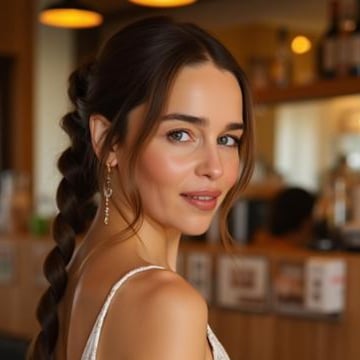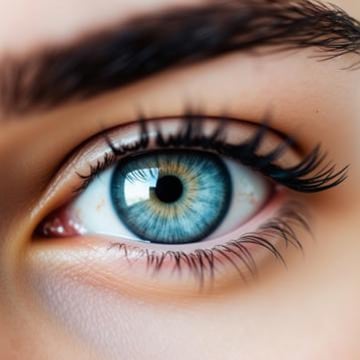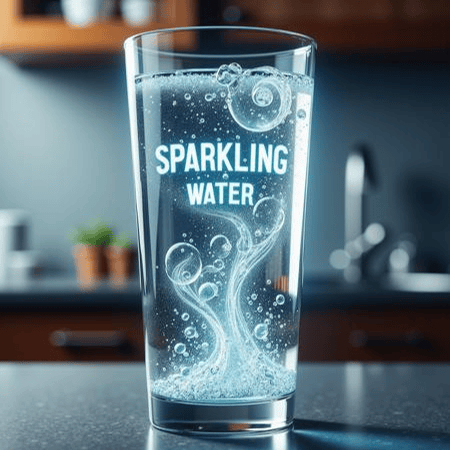FLUX1 - Mastering Camera Exposure to Achieve Realism in AI Image Generation - Phase One Camera
In the intricate world of AI-driven image creation, the precision of your prompts is crucial for producing captivating and authentic visuals. The phrase "realistic photo" might initially appear adequate, but it often falls short in providing the detailed guidance these sophisticated systems require. AI image generators interpret prompts with exacting accuracy, adhering strictly to the instructions given. To harness their capabilities fully and craft images that resonate with realism, we must adopt a more refined strategy. By embedding specific camera exposure commands within our prompts, we give the AI a well-defined blueprint, paving the way for sharper, more impactful results. Let's delve into the significance of these commands, experimenting with subtle adjustments to see how they can transform the final image.① General:Phase One XF IQ4 150MP, low exposure, high contrast black and white, ISO 50, with a 120mm macro lens.Result: Produces a highly detailed, high-contrast monochrome image with exceptional sharpness, emphasizing textures and fine details.Phase One XT Camera System, low exposure, high contrast, ISO 50, with a 90mm tilt-shift lens.Result: Creates a unique perspective with selective focus, enhancing depth and producing a miniature-like effect with strong contrast.Phase One XF IQ4 150MP, long exposure, low exposure, high contrast, ISO 50, with a 35mm wide-angle lens.Result: Captures a wide field of view with motion blur, combining sharp static elements with smooth, flowing movement in high contrast.Phase One XT with Rodenstock lens, low exposure, extreme high contrast, ISO 35, with a 50mm prime lens.Result: Delivers an image with extreme tonal range, sharp details, and deep shadows, ideal for dramatic scenes or subjects.Phase One XT IQ4 150MP, low exposure, high contrast, ISO 50, with a 120mm macro lens.Result: Renders minute details with exceptional clarity and strong contrast, perfect for close-up subjects and intricate textures.Phase One XT IQ4 150MP, low exposure, high contrast, ISO 50, with an 80mm prime lens.☝️ Result: Produces a balanced, high-contrast image with natural perspective, suitable for portraits or general photography with strong detail.Phase One XT Camera System, low exposure, high contrast, ISO 50, with a 28mm wide-angle lens.Result: Captures expansive scenes with dramatic contrast, emphasizing foreground elements while maintaining background detail.Phase One XT IQ4 150MP, low exposure, high contrast, ISO 50, with a 100mm macro lens.Result: Achieves extreme close-up shots with high contrast, revealing intricate structures and patterns invisible to the naked eye.Phase One XT Camera System, low exposure, high contrast, ISO 35, with a 120mm macro lens and bellows extension.Result: Enables ultra-close focusing with exceptional detail and contrast, ideal for scientific or artistic macro photography.Phase One XF IQ4 150MP, low exposure, high contrast, ISO 50, with a 150mm macro lens.Result: Provides high magnification with a longer working distance, producing sharp, high-contrast images of small subjects.Phase One XT IQ4 150MP, low exposure, high contrast, ISO 35, with a 45mm wide-angle lens and ND filter.Result: Allows for longer exposures in bright conditions, capturing motion blur with a wide perspective and strong contrast.Phase One XT IQ4 150MP, low exposure, high contrast, ISO 50, with a 50mm prime lens and polarizing filter.Result: Enhances color saturation and reduces reflections, creating vivid images with deep contrasts and clear details.Phase One XF IQ3 100MP, low exposure, high contrast, ISO 100 (pushed to 200), with a 80mm prime lens.Result: Produces a slightly grainy image with enhanced contrast, adding a subtle texture and mood to the photograph.Phase One XF IQ3 100MP, low exposure, high contrast, ISO 100 (pushed to 400), with a 50mm prime lens and black and white film.Result: Creates a high-contrast monochrome image with noticeable grain, evoking a classic film look with deep blacks and bright highlights.Phase One XF IQ3 100MP, low exposure, high contrast, ISO 100 (pushed to 200), with a 35mm wide-angle lens and infrared film.Result: Generates an otherworldly effect with unique tonal responses, emphasizing foliage and creating surreal landscapes with a wide field of view.② Nature & Macro:Phase One XF IQ4 150MP, low exposure, high contrast black and white, ISO 50, with a 120mm macro lens.Result: Produces a highly detailed monochrome image with stark contrast, emphasizing the finest textures and intricate patterns. The macro lens reveals minute details in the subject, while the high contrast creates a dramatic interplay of light and shadow.Phase One XT Camera System, low exposure, high contrast, ISO 50, with a 90mm tilt-shift lens.Result: Creates a unique perspective with selective focus, enhancing depth perception and producing a miniature-like effect. The tilt-shift lens allows for precise control over the plane of focus, resulting in a surreal, hyper-realistic image with areas of sharp detail contrasting with intentional blur.Phase One XF IQ4 150MP, long exposure, low exposure, high contrast, ISO 50, with a 24mm wide-angle lens.Result: Captures a wide field of view with dramatic motion blur, combining sharp static elements with smooth, flowing streaks of light. The long exposure creates a sense of movement and energy, while the high contrast emphasizes the interplay between light sources and shadows in the scene.③ Still Life & Abstract:Phase One XT with Rodenstock lens, low exposure, extreme high contrast, ISO 35, with a 90mm macro lens.Result: Produces an exceptionally detailed image with extreme tonal range, emphasizing the intricate structure of the subject. The macro lens reveals minute details, while the high contrast creates a striking separation between the subject and the dark background. Fine textures and delicate features are rendered with remarkable clarity.Phase One XT IQ4 150MP, low exposure, high contrast, ISO 50, with a 120mm macro lens.Result: Captures a highly detailed close-up image with strong contrast, perfect for revealing the subtle nuances of small subjects. The macro lens allows for extreme magnification, showcasing the perfect geometry of the subject. Reflections and refractions within the subject are rendered with exceptional clarity, creating a captivating interplay of light and form.Phase One XT IQ4 150MP, low exposure, high contrast, ISO 50, with an 80mm prime lens.Result: Delivers a sharp, high-contrast image that emphasizes texture and fine details. The prime lens provides excellent optical quality, rendering intricate structures with precision. The high contrast setting accentuates the interplay of light and shadow, bringing out the subtle variations in texture and form of the subject.④ Architecture & Urban:Phase One XT Camera System, low exposure, high contrast, ISO 50, Rodagon 45mm f/5.6 lens.Phase One XT Camera System, low exposure, high contrast, ISO 50, Schneider Kreuznach 80mm f/5.6 LS lens.Phase One XT IQ4 150MP, 100mm macro lens, low exposure, high contrast, ISO 50.Result: A high-contrast, dramatic image filled with intricate details and textures. The finest details of the architecture, especially stonework, ornamentation, and textures, will be accentuated and stand out.Phase One XT IQ4 150MP, 45mm wide-angle lens, low exposure, high contrast, ISO 50.Result: A powerful composition with a wide field of view, dramatic lighting, and a strong interplay of light and shadow. The overall structure of the architecture, its relationship to the surroundings, and the interplay with the sky will be emphasized, creating a visually striking effect.⑤ Mechanical & Detail:Phase One XT Camera System with bellows extension, low exposure, high contrast, ISO 35, with a 120mm macro lens.Result: Produces an ultra-detailed close-up image, emphasizing the precision and craftsmanship of intricate objects with sharp contrast.⑥ Botanical & Floral:Phase One XF IQ4 150MP, low exposure, high contrast, ISO 50, with an 80mm prime lens.Result: Captures fine botanical details, with a strong focus on textures and patterns through enhanced contrast.⑦ Motion & Texture:Phase One XT IQ4 150MP with ND filter, low exposure, high contrast, ISO 35, with a 35mm wide-angle lens.⑧ Reflection & Abstraction:Phase One XT IQ4 150MP with polarizing filter, low exposure, high contrast, ISO 50, with a 50mm prime lens.Result: Reduces reflections and enhances the subtle interplay of light on reflective surfaces, with a high degree of clarity and depth.⑨ Film & Mood:Phase One XF IQ3 100MP, low exposure, high contrast, ISO 100 (pushed to 200), with a 50mm prime lens.Result: Creates a high-contrast image with a clear silhouette and deep shadows, enhancing the sense of mood and atmosphere.Phase One XF IQ3 100MP with black and white film, low exposure, high contrast, ISO 100 (pushed to 400), with an 80mm prime lens.Result: Produces a dramatic black and white image with rich contrast, emphasizing emotional intensity and striking detail.Phase One XF IQ3 100MP with infrared film, low exposure, high contrast, ISO 100 (pushed to 200), with a 35mm wide-angle lens.Result: Generates a surreal, otherworldly image with unique light rendering, highlighting hidden textures and patterns.🟨 FAQWhy are Hasselblad, Phase One, and Leica cameras the primary focus, when there are other great options?☝️ These three brands are known for their high-end cameras, which are often used by professionals due to their superior quality. Based on their training on the images produced by these high-end professionals, the algorithm, called artificial intelligence, focuses on producing output that reflects the exceptional quality associated with these brands.For Hasselblad Camera - https://tensor.art/articles/771012991446530480For Leica Camera - https://tensor.art/articles/771052694124299213
























